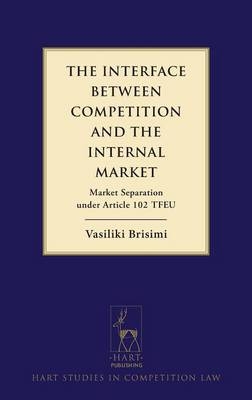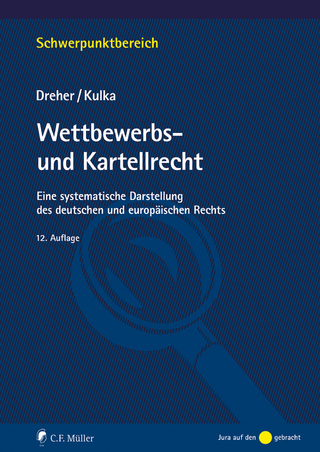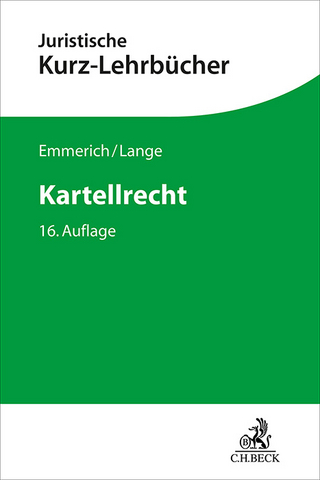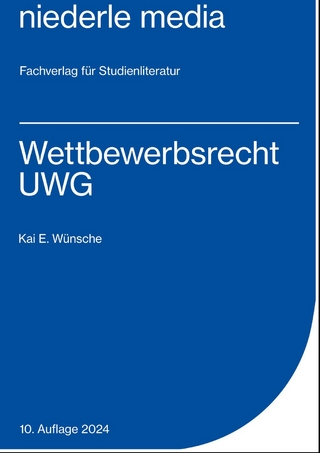
The Interface between Competition and the Internal Market
Hart Publishing (Verlag)
978-1-84946-569-4 (ISBN)
This book explores the interface between competition law and market integration in the application of Article 102 of the Treaty on the Functioning of the European Union (TFEU), focusing on the notion of ‘market separation’-namely conduct that may hinder cross-border trade. The discussion reviews, among other things, the treatment of geographic price discrimination and exclusionary abuse, by which out-of-state competitors are affected.
‘Market separation’ cases are treated in the book as a case study for appraising the interface between competition and the Internal Market. On this basis, the book provides a comparative analysis of the Treaty requirements under Article 102 TFEU when applied in ‘market separation’ cases and the Treaty requirements under the free movement provisions. In addition, it utilises ‘market separation’ cases as a springboard for advancing an informed reformulation of the application of Article 102 TFEU when state action comes into play.
All in all, the analysis presented in the book deconstructs the elements for establishing ‘market separation’ as an abuse of the dominant position. It shows that there is nothing that would justify a distinctive treatment of ‘market separation’ under Article 102 TFEU, other than a principled understanding of Internal Market law as a whole: whatever understanding one reaches about the proper shape of the Internal Market, interrogation of the proper application of competition law comes after that and thus should be informed by this understanding.
Vasiliki Brisimi (DPhil, Oxon) is an Associate at Koutalidis Law Firm in Athens, Greece.
I. The Interface between Competition and the Internal Market: Market Separation under Article 102 TFEU II. Methodological Remarks on the Analysis of ‘Market Separation under Article 102 TFEU’
III. Summary of the Chapters of this Book
1 Objectives of Article 102 TFEU and Market Integration: From a Historical Analysis to the Current Jurisdictional Approach
I. Introduction
II. Objectives of EU Regulation of Unilateral Anti-competitive Conduct (Article 102 TFEU)
III. Linking the Objectives of Article 102 TFEU to EU Trade Liberalisation
IV. ‘Effect on Trade’: An Analytical Approach to Jurisdictional Elements with the Advantage of Hindsight
V. Conclusions
2 Market Separation under Article 102 TFEU: The Role of Dominance
I. Introduction
II. Cases of Market Separation by Dominant Undertakings under Article 102 TFEU
III. An Analytical Approach to Market Separation by Private Actors under the Free Movement Provisions
and its Relationship to Market Separation by Dominant Undertakings
IV. Functionalism and the Significance of Public Enforcement of the Competition Law Provisions
V. Beyond Functionalism: The Significance of a Quantitative Threshold for Power
VI. The Specific Example of Article 106(2) TFEU
VII. Conclusions
3 Market Separation under Article 102 TFEU: The Role of Economic Justifications
I. Introduction
II. The Analytical Framework for Assessing Market Separation as an Abuse of the Dominant Position
III. Conceptual Elements of Measures Constituting a Restriction on Free Movement
IV. Establishing Market Separation as an Abuse of the Dominant Position
V. The Constitutional Basis for Aligning the Notions of Trade Barrier and Abuse of the Dominant Position
VI. Conclusions
4 Market Separation under Article 102 TFEU and the Role of Non-economic Justifications: A Question of Attribution
I. Introduction
II. Abuse and Public Policy Justifications: Treaty-Based Arguments
III. Abuse and Public Policy Justifications: Interpretation of the Case Law
IV. Conclusions
5 Shared Responsibility for Market Separation by Dominant Undertakings and the State: The Question of Attribution Revisited
I. Introduction
II. Abuse and the State Action Defence: Establishing Private Responsibility
III. Abuse and the State Action Doctrine: Establishing State Responsibility
IV. The Interplay between Private and State Responsibility under the Competition Law Provisions
V. Conclusions
6 Principled Attribution of Market Separation to the Dominant Undertaking and the State: A Revised State Action Defence
I. Introduction
II. From Article 3(1)(g) TEC to Protocol No 27 TFEU: Distinct Substantive Legality Tests and Associated
Enforcement Mechanisms
III. Principled Attribution of Market Separation Controlled: The
Example of the ‘Exhaustion’ of Intellectual Property Rights
IV. Conclusions
| Erscheint lt. Verlag | 24.7.2014 |
|---|---|
| Reihe/Serie | Hart Studies in Competition Law |
| Verlagsort | Oxford |
| Sprache | englisch |
| Maße | 156 x 234 mm |
| Gewicht | 578 g |
| Themenwelt | Recht / Steuern ► EU / Internationales Recht |
| Recht / Steuern ► Wirtschaftsrecht ► Wettbewerbsrecht | |
| ISBN-10 | 1-84946-569-X / 184946569X |
| ISBN-13 | 978-1-84946-569-4 / 9781849465694 |
| Zustand | Neuware |
| Haben Sie eine Frage zum Produkt? |
aus dem Bereich


